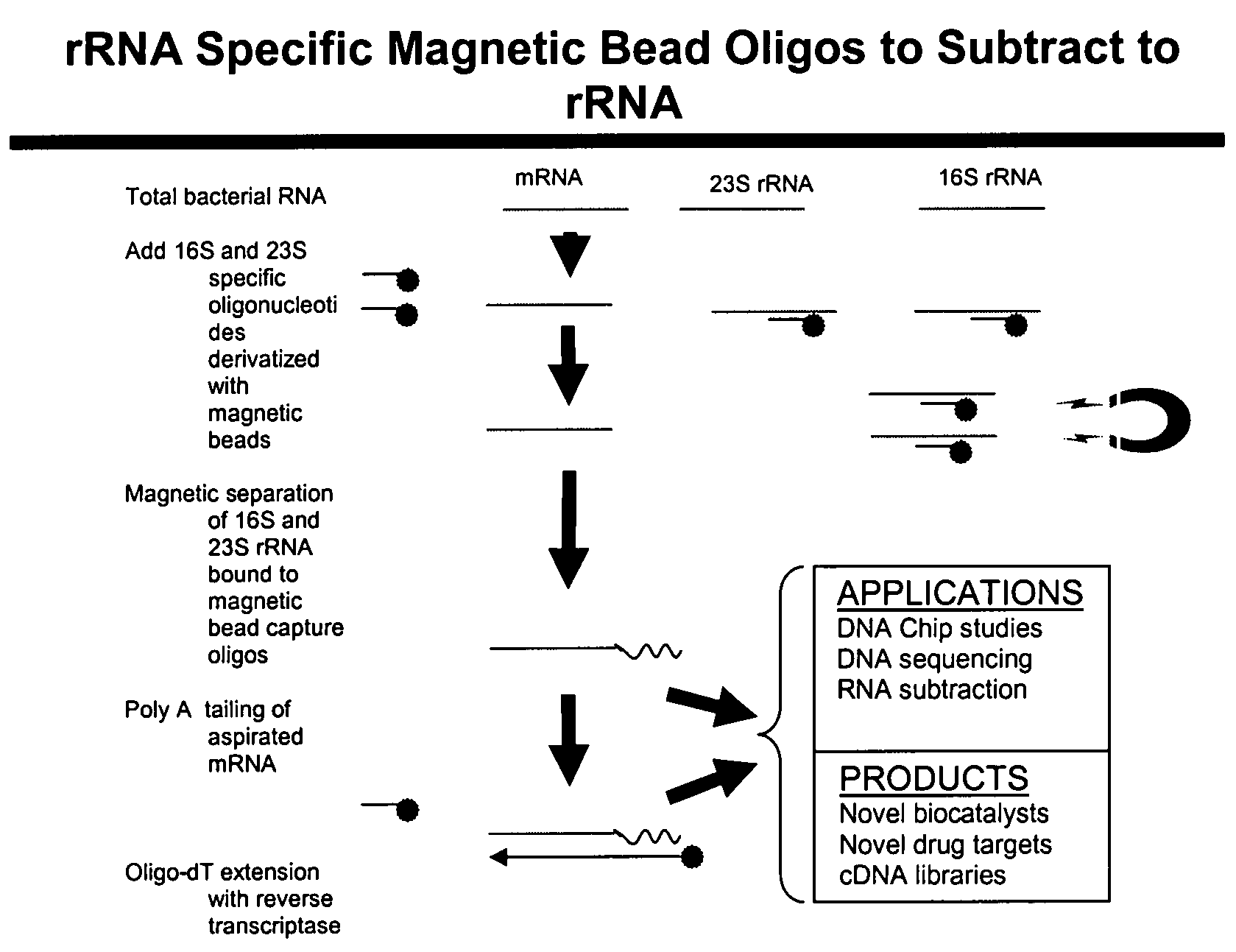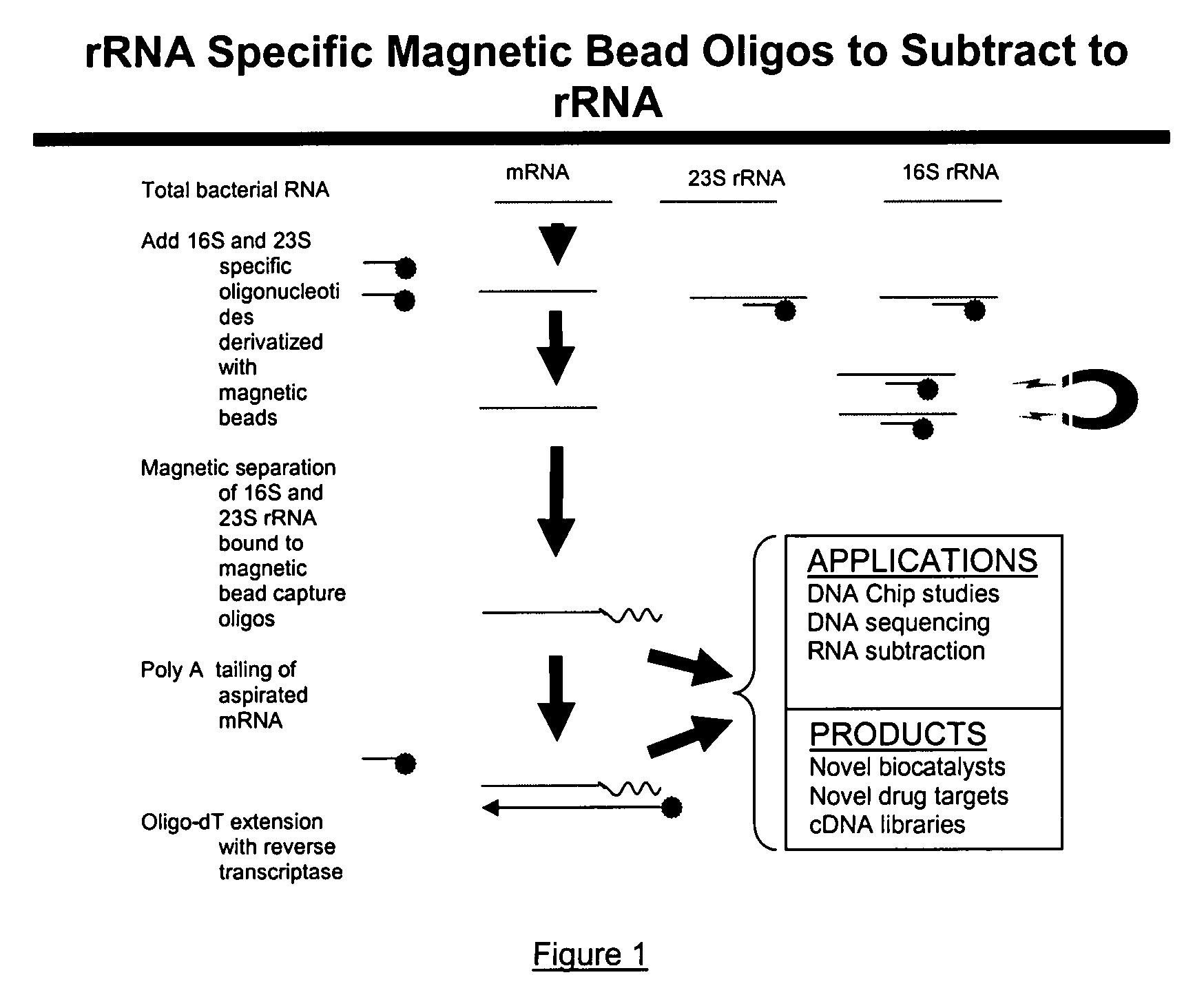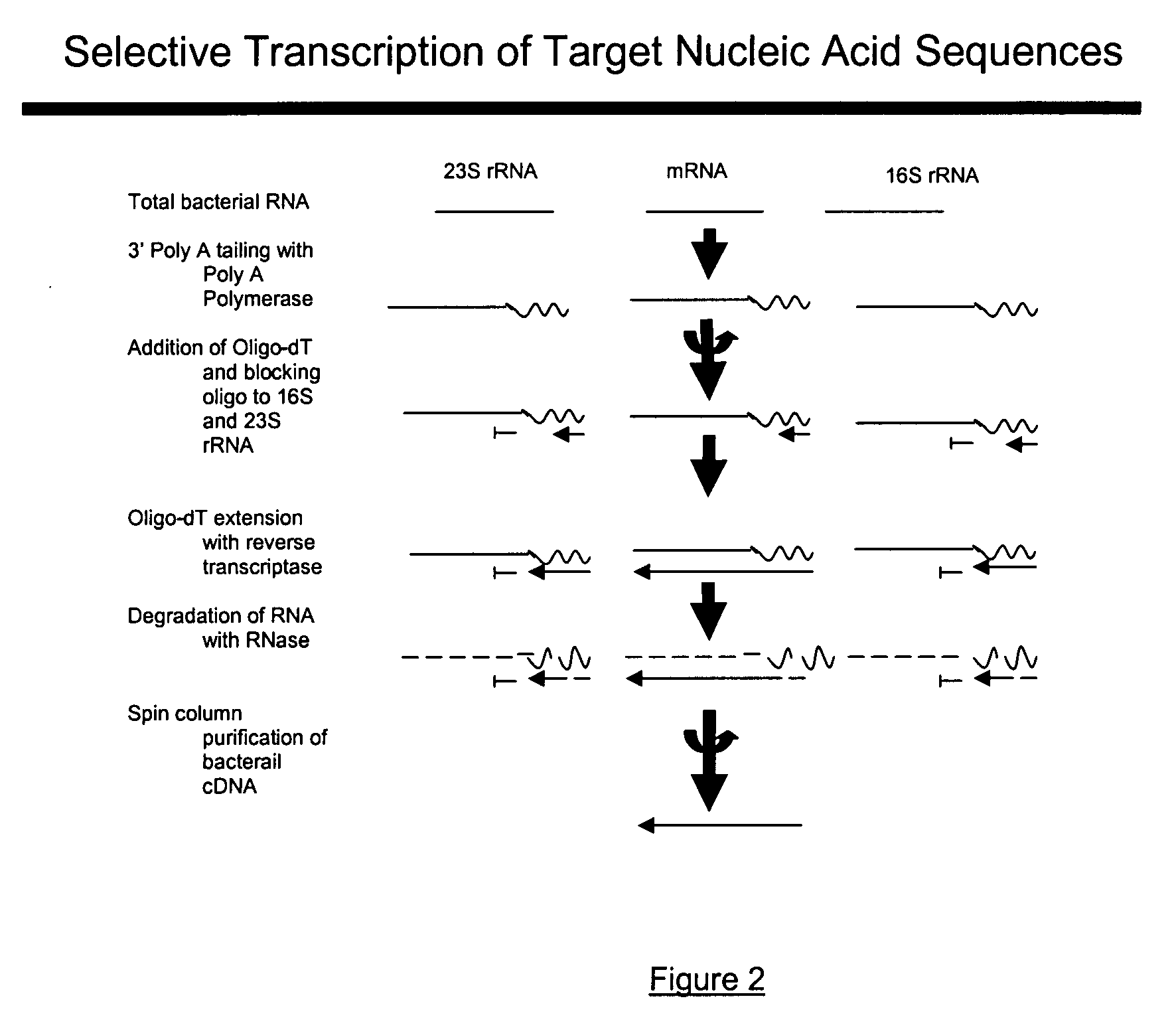Methods and kits for negative selection of desired nucleic acid sequences
a nucleic acid sequence and kit technology, applied in the direction of transferases, biological water/sewage treatment, drug compositions, etc., can solve the problems of difficult target capture of bacterial mrna, inability to achieve facile strategy, and inability to obtain useful insights into its gene expression under different experimental conditions. and thus understand its physiology
- Summary
- Abstract
- Description
- Claims
- Application Information
AI Technical Summary
Benefits of technology
Problems solved by technology
Method used
Image
Examples
Embodiment Construction
[0019]In comparison to the foregoing techniques reviewed above, the present invention provides a detailed and yet a simple methodology to not only enrich bacterial mRNA from total RNA but also synthesize cDNA libraries of bacterial mRNA transcripts obtained as part of total bacterial RNA from a bacterial pure culture or a natural microbial community. The present invention, as contemplated, not only reduces time but also accomplishes targeted unrestricted conversion of only bacterial mRNA into cDNA. The present invention, in further embodiments, provides for preferential cDNA synthesis from mRNA templates while restricting the conversion of bacterial rRNA into cDNA. For those skilled in the art, it is not beyond their capability to modify the method for alternative applications involving preferential extension of universal primers using select polynucleotide targets as templates while blocking the extension of primers on undesirable targets.
[0020]In the preferred embodiment of the pr...
PUM
| Property | Measurement | Unit |
|---|---|---|
| temperature | aaaaa | aaaaa |
| temperature | aaaaa | aaaaa |
| temperature | aaaaa | aaaaa |
Abstract
Description
Claims
Application Information
 Login to View More
Login to View More - R&D
- Intellectual Property
- Life Sciences
- Materials
- Tech Scout
- Unparalleled Data Quality
- Higher Quality Content
- 60% Fewer Hallucinations
Browse by: Latest US Patents, China's latest patents, Technical Efficacy Thesaurus, Application Domain, Technology Topic, Popular Technical Reports.
© 2025 PatSnap. All rights reserved.Legal|Privacy policy|Modern Slavery Act Transparency Statement|Sitemap|About US| Contact US: help@patsnap.com



